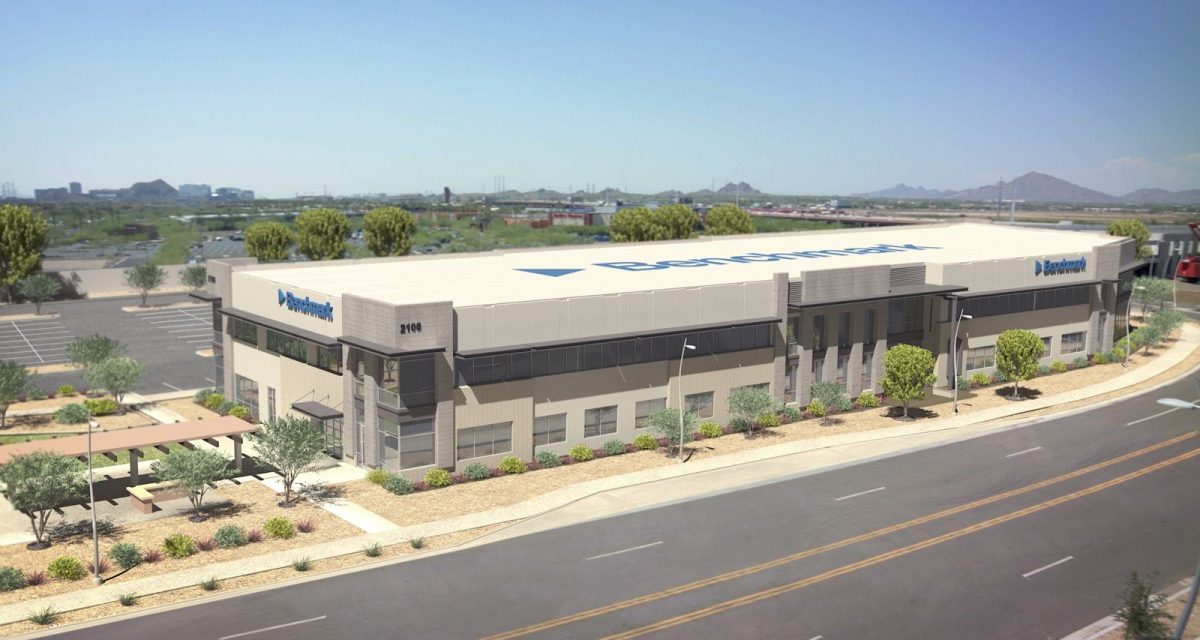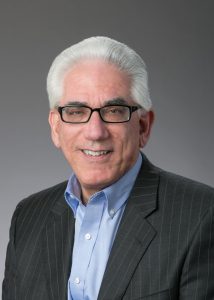EMSNow Executive Interview: Paul J. Tufano, President and CEO, Benchmark Electronics Inc.

EMSNow caught up with one of the architects of the EMS industry, Benchmark Electronics Inc. President and CEO, Paul J. Tufano for an Executive Interview. Benchmark started out in 1979 as the manufacturing arm of a Intermedics, and was bought out by management a few years later. After a decade or so of organic growth, they began an acquisition journey that included AVEX, ACT Manufacturing, Pemstar, CTS, Suntron and in 2015 Secure Technologies. Paul joined Benchmark in 2015 and brings broad experience to his role, having spent over 35 years in the technology and telecommunications industries.
 EMSNow: Benchmark’s growth strategy in the 90s and 00s was through targeted acquisitions. How has that strategy shaped the company Benchmark is today?
EMSNow: Benchmark’s growth strategy in the 90s and 00s was through targeted acquisitions. How has that strategy shaped the company Benchmark is today?
Over the course of those two decades, Benchmark and the sites we obtained around the world were unique and were explicitly purchased in specific geographies to meet customer demands. This is an excellent platform to enable growth. Our job now is to leverage the synergies and capabilities of our global network of sites to expand further. This will increase our brand’s value proposition and create a more appealing and valuable service for our customers. We plan to continue to expand our capabilities through acquisitions, but put more focus on technology acquisitions, rather than the purchase of EMS companies.
Of the acquisitions we’ve made, I think the most impactful has been the acquisition of our Precision Technologies business. It got us into the space of high-end machining which is a more robust manufacturing process. To me, this is a singular example of an acquisition that has repositioned the company.
Another acquisition that has uniquely positioned our business is Secure Technology, which brought over 25 years’ experience building systems for all branches of the military. Coupled with Secure’s deep A&D expertise, Benchmark acquired Lark RF Technology, with ruggedized high frequency component technologies including filters and integrated switch filters. We continue to expand our component technologies in higher frequency and complexity. We also acquired process technology utilizing liquid crystal polymer (LCP) circuits for micro-electronic assemblies that allow next generation size, weight and power (SWaP) reduction for a wide range of electronics, IoT sensors and edge devices. Through this, we are able to reimagine the whole foundation of electronic circuits by vertically integrating design skills, circuit technology, micro-electronics and test capabilities at our RF and high-speed design center in Phoenix.
EMSNow: Benchmark’s vision is to ‘create superior value for customers’ and one of the values you cite is to be ‘constructively inquisitive’ – a very thought-provoking phrase. What accomplishment are you most proud of that reflects that vision at Benchmark?
Being constructively inquisitive is the continuous state of asking yourself how you should behave after looking at the problem from the customer’s perspective. To do this, we must get our leaders and our program managers to be thoughtful as it relates to the customer’s issues and provide them with intellectual value. Understanding our customer’s go-to-market strategy, competitive positioning, product quality and key differentiators enhances our ability to help solve problems and be a true partner.
In my years in the OEM space as a buyer of services, that was an attribute of EMS companies that was sorely missed. At Benchmark, we strive to demonstrate this behavior, which I believe is the key to our competitive advantage.
Another accomplishment which reflects our vision of creating superior value is our heritage in the medical industry and the ways we have leveraged this to improve other markets. We have provided a rigorous and robust level of service in the medical sector over the years, and our heritage has allowed us to extend our expertise to other mission-critical markets by bringing those assets, stringent processes and requirements together.
EMSNow: The skilled labor shortage has become a limiting factor to growth in many companies. What Benchmark training programs have been most effective in attracting young people to manufacturing?
If you look at the attractiveness of Benchmark and other EMS companies, I think it’s in our diversity of services. The number of markets and the number of customers you can serve and the ability to work on a lot of different things are critical recruiting attributes. For us, the most important thing we do when we hire, is to provide new employees the ability to have diversity in terms of customers they deal with, the products they work on, and the problems they solve. So, as we are growing the company, we’re always looking at how we can expand our capabilities and our pedigree in more complex projects. Once we have our employees on board, we continually ensure their skills are upgraded in a variety of areas.
EMSNow: The Benchmark IoT services offering is very impressive. Explain how you were able to put that together for your customers.
Our IoT platform is a derivative of some of the work we did with the military. It’s unique in that it is radio agnostic. That means we will support LTE, ultra-wideband and more. For Benchmark, the key is the pillars of functionality that you’re able to access. As we look at the functionality in our platform, we address solutions that require real-time location and sensing.
EMSNow: It looks like your IoT platform is a homegrown version. Do you get pressure from the Smart Manufacturing vendors to adopt one of the off the shelf versions, or is there an advantage to your programs?
Since our IoT platform is radio agnostic, it’s very flexible. Therefore, we believe we have a platform that is easy to deploy and can coexist with a number of different smart manufacturing options. I believe that our platform is an advantage and we will be able to provide value to smart manufacturers. Our focus is on sensor integration and our solution is designed to interface into a number of cloud and service providers in the IoT space.
EMSNow: Benchmark recently moved its headquarters to Arizona. What was the reason for that move?
Prior to moving to Arizona, we were in Angleton, Texas and we were more of a virtual organization. A number of our executives lived in different parts of the country, as did their teams. The ability to collaborate and to address growth issues was difficult because of this diversity in proximity. We decided that it was essential to co-locate all of our executive team and the core pieces of our headquarters staff in order to increase collaboration and the speed of our decision making. That was the primary criteria for moving from Texas.
Once we decided to relocate our headquarters, we completed a process to evaluate a number of different locales. Part of the criteria of assessing where we might potentially go was to have proximity and access to a leading university, both for the ability to recruit young talent and also to collaborate in certain areas. As we assessed locales in Colorado, Arizona, Texas, Florida, and the Carolinas, Arizona State University (ASU) was a standout. Not only in their openness, but also in their speed and willingness to partner with us. We’ve had a very good relationship with ASU over the last year since we’ve been here. We’ve had a number of ASU interns in the company and they’ve proven to be exceptionally bright, energetic, talented people.
EMSNow: You have been a key executive on both sides of the aisle in OEM and EMS companies throughout your career, and so are clearly one of the founding fathers/architects of the outsourcing phenomenon. What would you say are the most unexpected benefits/challenges for the industry as it has evolved today?
Our industry has gone through a number of transitions throughout its history. I think what we’re seeing in the industry now is that it’s on the verge of bifurcation. Those companies that are extremely large and in the top end of the revenue range have to look at different markets outside of electronics to provide growth for their companies and factories. Those that are smaller like us are becoming more of an engineering and manufacturing firm. I think this is interesting, and it represents the next stage of evolution in the industry. I think it’s healthy and exceptionally attractive to customers. This change will redefine EMS going forward.
That being said, Benchmark will focus more on design services and technology solutions in order to rapidly launch our customer’s products through our world-class manufacturing network. Our end goal is to address customer needs regarding going-to-market at an affordable and quicker pace. To do that, you have to be more technically engaged with your customer. That’s why engineering services are critical. Secondly, to help customers go-to-market faster, we need to have a portfolio of solutions and technology building blocks that they can use to shorten the development cycle. Lastly, it’s highly necessary to have robust manufacturing capabilities that allow them to use the same partner to scale.
We are investing in each of those three areas, engineering services, technology solutions and manufacturing services. We will continue to grow and invest in those things to meet customer needs and help them go to market faster and more economically.
The unexpected benefit we have found is that our smaller size is actually an advantage because we can serve customers more intimately and bring the full force of these capabilities together in a laser-focused way. We provide more value for customers because we offer a deep partnership and a unified solution.




